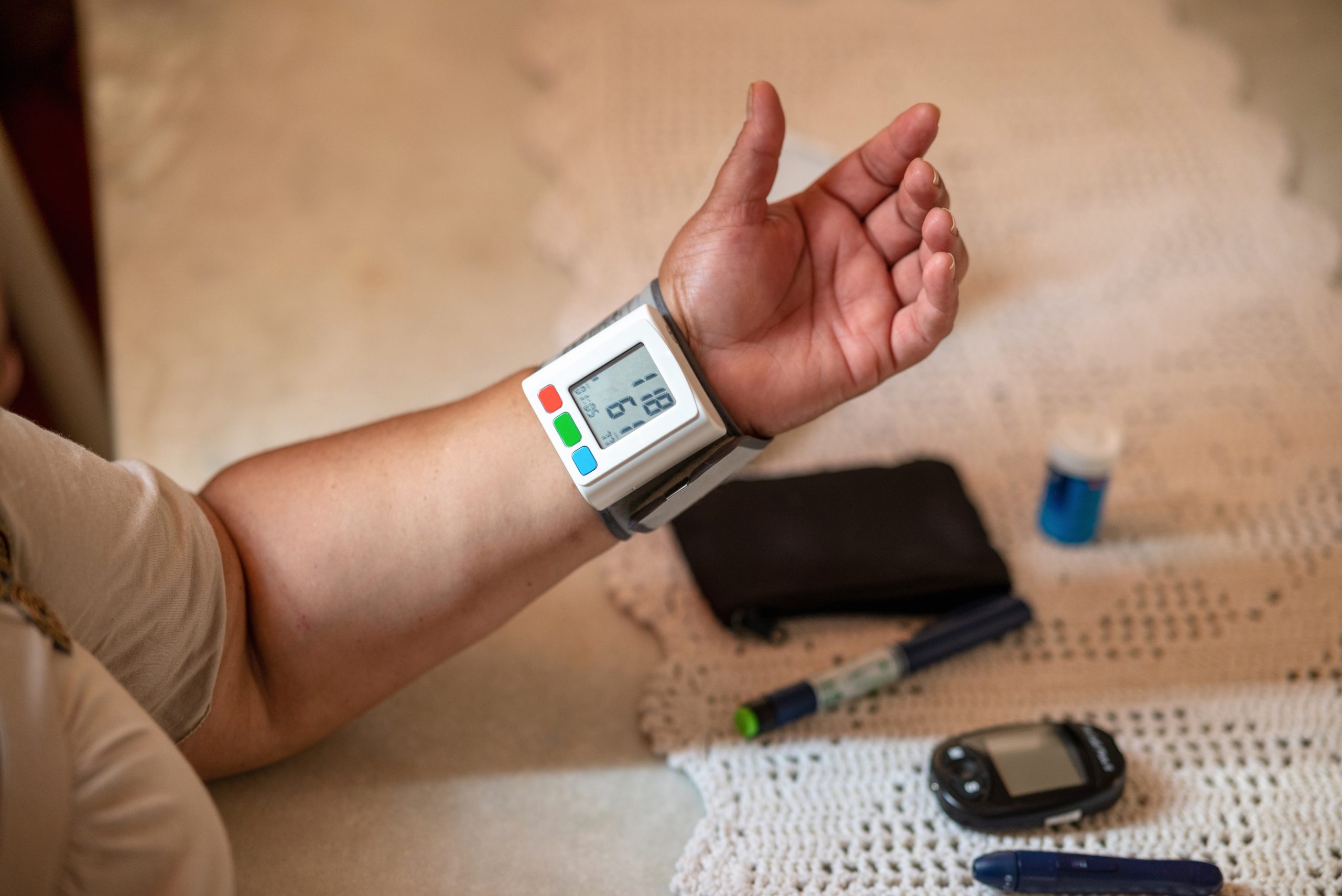Home | Specialties | Physical Therapy | Blood Flow Restriction
Expert Blood Flow Restriction Therapy
Blood flow restriction therapy (BFRT) involves temporarily reducing blood flow to a limb during exercise by applying a specialized tourniquet or wrap. This causes your muscles to fatigue faster with lighter weights than they usually would. Though you’re lifting less, studies show muscle growth and strength increases comparable to traditional high-load training. The temporary occlusion appears to trigger beneficial metabolic, hormonal, and cellular responses. This often helps patients achieve faster recovery times, increased endurance, and rehabilitation for some injuries. This innovative therapy allows you to build muscle and strength with reduced strain on joints and ligaments compared to heavy lifting. Our trained Michigan physical therapists carefully determine optimal restriction levels and supervise your sessions to ensure safety and efficacy.

What is Blood Flow Restriction
BFR training, also known as occlusion training, is a technique used in our physical therapy clinics to promote muscle growth and strength using low-intensity resistance exercises combined with restricted blood flow to the working muscles.
How BFRT Works
Blood flow restriction therapy works by partially restricting venous blood flow from the limbs while exercising using moderate resistance. This pooling of blood increases metabolic stress and stimulates the release of hormones like growth hormones and insulin growth factor 1. Though patients use lighter weights, typically 20-30% of 1 rep max, studies show this metabolic cascade can lead to increases in muscle size and strength similar to heavier load training when combined with moderate volume. The temporary restriction appears to trigger beneficial cellular and metabolic responses.
What to Expect
Assessment and Screening
At the initial consultation, the physical therapist assesses the patient’s medical history, current fitness level, and any contraindications for BFR training. Contraindications may include certain cardiovascular conditions, blood clotting disorders, and specific injuries.
Selection of Cuff and Equipment
Our therapist selects appropriate BFR cuffs or bands that are specifically designed to safely restrict blood flow while allowing venous return. The cuffs or bands are then connected to a BFR Machine that automatically calculates the patient’s blood pressure. Our BFR Machine allows for greater accuracy than the standard manual procedure.
Pressure Setting
The BFR Machine adjusts the pressure of the cuffs to a personalized and safe level based on the patient’s limb size and tolerance. The goal is to restrict venous blood flow while allowing arterial blood flow to the working muscles.
Low-Intensity Exercise
The patient performs low-intensity resistance exercises using weights or resistance bands. The resistance used is typically much lower than what would be used in traditional strength training.
Repetitions and Sets
BFR training involves higher repetitions and multiple sets with short rest intervals between sets. The exact number of repetitions and sets can vary based on the patient’s goals and condition.
Gradual Progression
Over time, the therapist gradually increases the intensity of the exercises and adjusts the pressure settings as the patient adapts and becomes more comfortable with the training.
Cool-Down and Post-Exercise Care
After the BFR training session, the patient is guided through a cool-down period and advised on any necessary post-exercise care.
What Are The Benefits Of Blood Flow Restriction Therapy?
BFRT provides the benefits of intense strength training while using lighter weights and inducing less joint stress. Additionally, studies show that BFR can promote muscle growth, strength gains, endurance, and rehabilitation outcomes comparable to high-load training.
Is Blood Flow Restriction Therapy Right For You
Ideal candidates for BFRT include those looking to build muscle and increase strength with reduced strain on the joints and ligaments. This includes aging adults interested in maintaining muscle mass, as BFRT can match traditional resistance training for increased size and strength. It is also often used during injury rehabilitation so clients can complete their rehab protocol at lower intensities while achieving similar adaptations. Additionally, it is an excellent option for those who struggle to put on muscle or work out due to certain medical conditions like osteoarthritis, tendinopathies, rotator cuff injuries, and ACL tears.
Find a Blood Flow Restriction Therapist in Michigan Today!
Looking for a expert physical therapy services in Michigan? Synergy Health Partners Physical Therapy offers personalized, outpatient care using evidence-based approaches to restore function and relieve pain. Our team of experienced physical therapists is treating in 3 convenient locations in Michigan, including Livonia, Warren, and Shelby Township.
